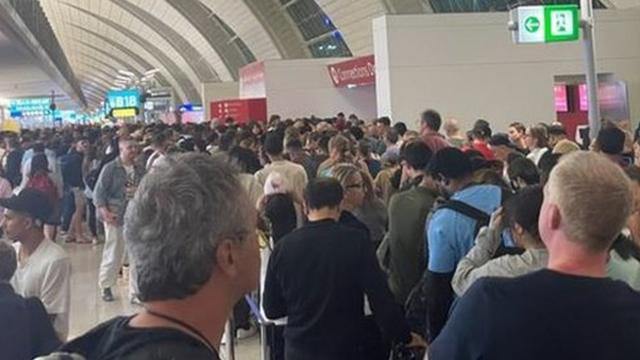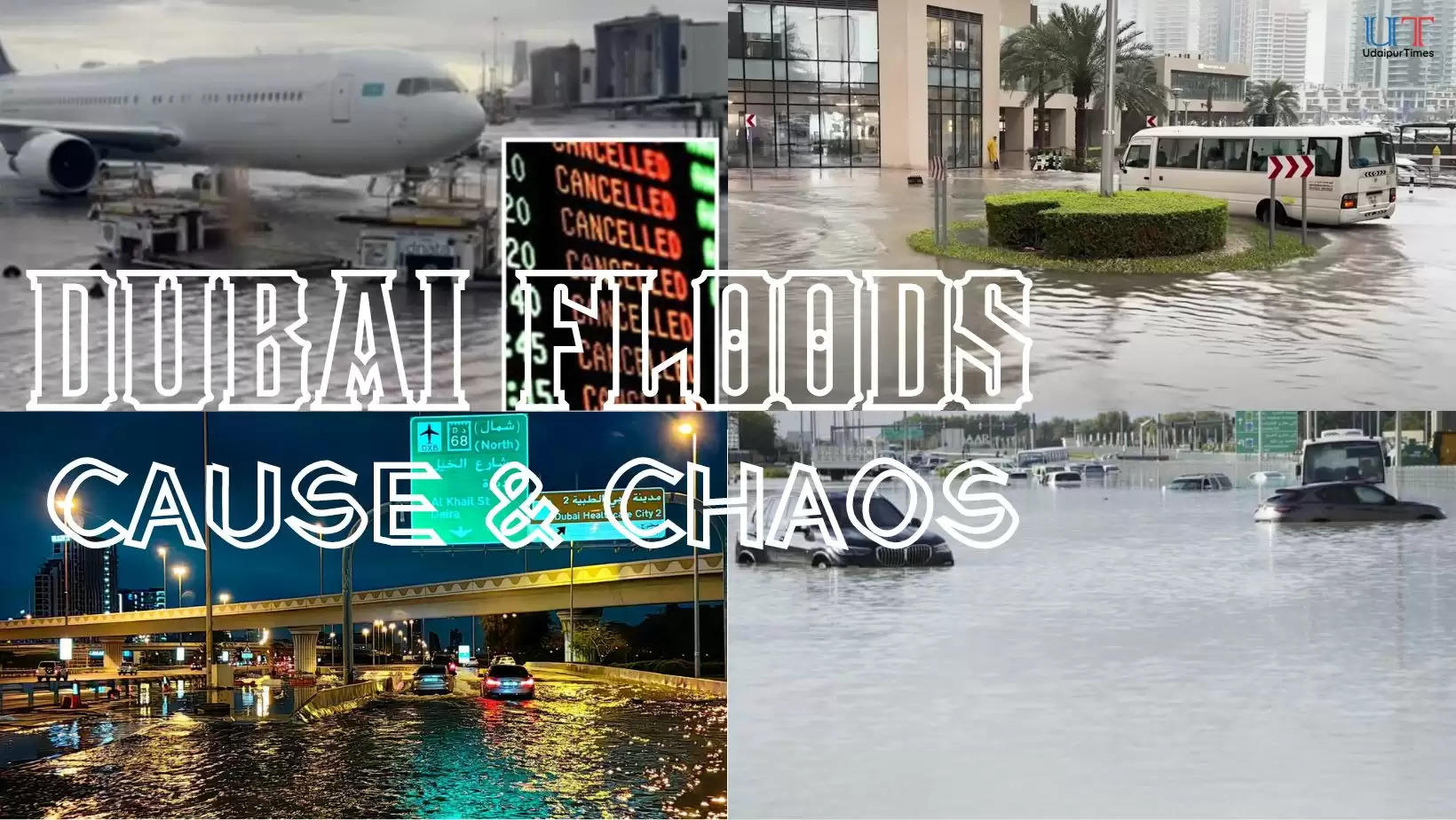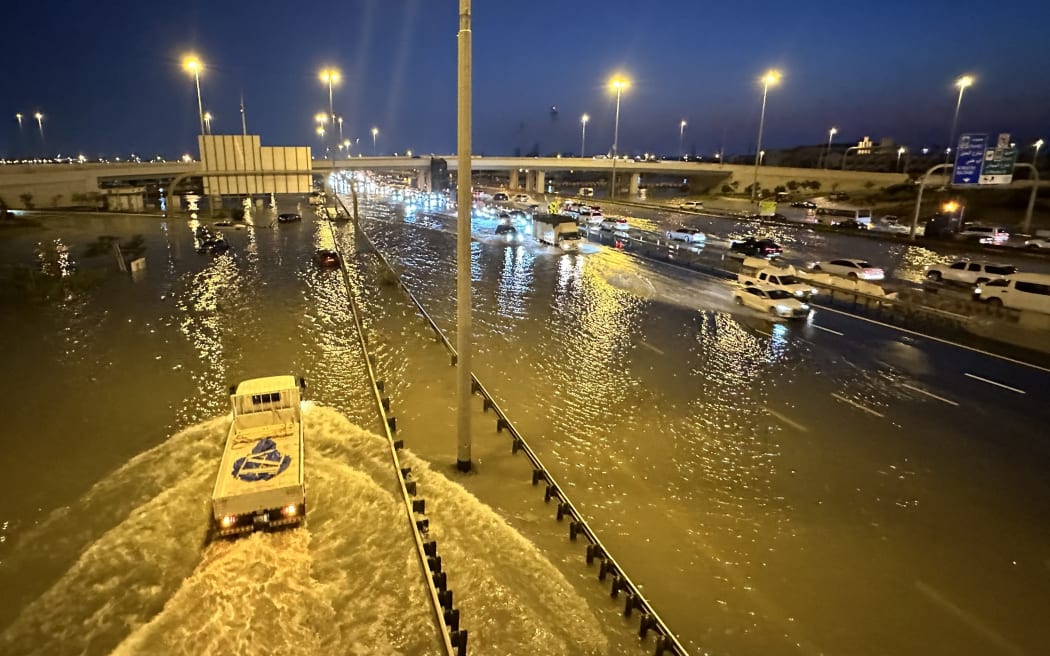Dubai Floods - Heaviest Rainfall but not the first time that the Emirates have faced severe rains
Airport in disarray as passengers struggle for information
The news of rains in the Emirates, especially in Dubai has been hogging the media limelight since the downpour begain in Oman on 14-15 April. By 15th, the rains had entered the United Arab Emirates and 16th was a day of reckoning for Dubai, one of the 7 Emirates of the UAE, which faced the fury of the rains along with its two neighbors, Abu Dhabi and Sharjah.
Al Ain recorded 254 mm (10 inches) rainfall on 17 April. This UAE town borders Oman.
Many parts of Dubai were submerged in water, shops were flooded, roads were closed to traffic, offices initiated work from home, schools and colleges were closed and one of the most chaotic situations were seen at the world's busiest airport, the Dubai International Airport. Passengers were facing delayed flights, cancelled flights, loss of luggage, lack of information, non availability of food, failed charging points and a hustle among travellers, some in transit and some from the Emirates.
Those wanting to leave the airport after their flights were cancelled, were not allowed to leave without exit passes, and the lack of staff at the airport as well as the airlines' staff made it difficult for the passengers. Those in transit, the elderly, those travelling with children, among others, faced a tough and unforeseen chaos at the Dubai International Airport, as reported by passengers. Many reported lost baggage and 10-12 hours of waiting. The chaos at the airport still reigns while this article is being published and flights are being cancelled for today as well. Even Emirates, known to be among the best in the world, was seen to be in utter disarray when it came to passenger management at the aiport.

What Caused this Rain and the flooding
The UAE and Oman are not equipped with proper drainage systems and over the years, slightly above average rainfall leads submerged roads in various places across both Oman and the Emirates. This is not uncommon to this area. Further, as per media reports, questions were raised on whether it is cloud seeding that the UAE has been processing over the last few years to increase rainfall in this arid region, has caused this sudden downpour. Authorities in the UAE Met department have confirmed to Reuters, that there was no such operation conducted before the storm. Experts also argue that it is misleading to say that cloud seeding caused heady rainfall. Friederike Otto, a senior lecturer at Imperial College London says that warmer climate across the world is leading to more rainfall, as warmer atmosphere holds more moisture. She added that Cloud Seeding cannot create clouds from nothing. Seeding encourages water that is already present in the sky to condense faster. Hence first moisture in the atmosphere is needed. Without moisture there will be no clouds, she said.
"A low pressure system in the upper atmosphere, coupled with low pressure at the surface have acted like a "squeeze" on the air" - Esraa Al Naqbi, National Centre of Meteorology, UAE
Climarte scientists have also agreed that human led climate change is leading to rising global temperatures and extreme weathers including intense rainfall. Rainfall after thunderstorms in the UAE are a result of warmer climates, they conclude. As per experts, the storm systems that produced the rain were forecast well in advance.
Is this a first for the UAE?
Yes, the thunderstorms and subsequent rainfall that pounded on the Emirates's are being recorded as the highest in the region and most chaotic, disrupting normal lives, disrupting the powerful airport systems, causing flooding in low lying areas, failure of power supply in many areas and termination of Metro and other public services. With Al Ain recording its highest rainfall of 254mm since 1949, Dubai International Airport (the epicentre for Dubai) recorded 142m rain till day end on Tuesday 16 April. The average rainfall recorded at Dubai is 94.7mm.
The drainage systems in the UAE were overwhelmed by the sudden downpour, neighborhoods were flooded and business districts were submerged. Even the famous 12 lane Sheikh Zayed Road in Dubai was in complete disarray, but eventuall helped people reach their destinations. This has happened within a year of Dubai hosting the United Nations COP28 climate talks.
This is not the first time that Dubai has faced this situation. In December 1995, Dubai faced intense rain for 11 days. The Dubai International Airport recorded 131mm rain in December 1995. Fujairah, an Emirate in the north, recorded 325mm rain. Heavy rains washed away roads, schools were closed, many people were forced to flee from their homes. Two teenagers were swept away in the floods. The Emirate of Dubai and Sharjah were unprepared for this kind of deluge, then. Even now, with three decades of hundreds of billions of dollars worth construction and development work, the drainage systems are still not equipped to handle this kind of rainfall. The system failed then, the system failed now.
The National, a state news paper, in an editorial on Thursday 18 April, mentioned this heavy downpour and the resulting situation as a warning to the countries in the Persian Gulf and suggested to "climate proof their futures". The article said, “The scale of this task is more daunting that it appears even at first glance, because such changes involve changing the urban environment of a region that for as long as it has been inhabited, has experienced little but heat and sand,”
In a message to the residents of the UAE late on Wednesday 17 April, Sh Mohammed bin Zayed Al Nahyan, the Ruler of Abu Dhabi and President of the UAE, assured that the authorities would quickly work on studying the condition of infrastructure throughout the country to limit the damage caused.
To sum it up, the Emirates have faced many such situations in the past and they have come back stronger. This one will be over swiftly with the coupled will of the residents and the robustness of the administration.
To join us on Facebook Click Here and Subscribe to UdaipurTimes Broadcast channels on GoogleNews | Telegram | Signal




